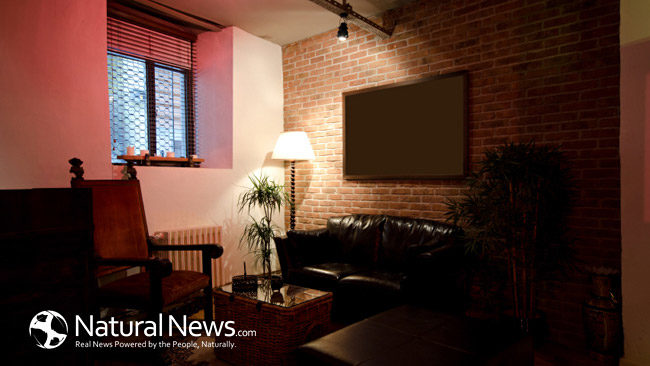Did you know that removing your shoes when you come inside not only helps keep your floors and carpet cleaner, but it’s also good for your health? The dirt you track in may contain harmful substances, such as vehicle exhaust residue, lead paint, pesticides and mercury.
There are lots changes you can make to improve your home, help the environment and benefit your health.
Walk the Walk
What’s on your floors? Possibly more than simple carpets or engineered flooring. Some floor coverings contain VOCs or volatile organic compounds.
In certain people, these chemicals cause nose, throat and skin distress, breathing difficulties, headaches, lightheadedness, nausea or overall fatigue. VOCs stick around for years and years. Formaldehyde and benzene – possible carcinogens – are sometimes found in carpets.
However, there are flooring options that don’t emit toxic fumes. They’re good for you and the environment:
- Carpets: A temporary fix is treated carpeting. Fibers are covered with a sealant, which blocks outgassing for up to one year.
Though more costly, carpets made from natural fibers are both sustainable and less toxic. These are manufactured from materials such as wool, sisal, jute or seagrass.
If you’re putting in eco-friendly carpeting, make sure the installation process is greener, too. Standard chemical adhesives may lead to respiratory problems.
Using tacks is a completely nonchemical way of laying carpet. If you’re stuck on glue, try one that’s identified as water-based and low-VOC.
- Harder options: Floors made from sustainably harvested hardwoods are safe. Cork has a lot going for it, too. It’s sturdy, comfortable, fire-resistant, hypoallergenic and insulating. The cork oak tree is a fast grower, as well.
Bamboo is very hard and durable. It also resists water and mildew. Recycled glass tiles are a good choice, as is natural linoleum. Linoleum is a green product, made from linseed oil, cork dust, wood flour, tree resins, ground limestone, jute and natural coloring.
Brush It Off
Both old and new paints are potentially problematic.
- Get the lead out: Lead-based paint was outlawed in 1978, so houses built before then likely contain it. This becomes an issue when a painted surface is disturbed, such as through sanding or chipping.
If walls or ceilings are in good condition, lead paint can be covered with safer paint or wallpaper. However, any damaged areas need special attention, as do railings and windowsills that often become toddlers’ chew toys.
Options to treat lead paint include covering surfaces with materials such as drywall, vinyl or aluminum. Encapsulants go on like paint but bond to lead. Windows, doors and woodwork can also be completely replaced.
Removing lead paint is complicated. The affected area must be sealed off from the rest of the house. Wet sanding and scraping helps limit dispersal of lead particles.
- Go VOC-free: Standard paint contains VOCs – the same chemicals you wanted to avoid in your flooring. Fortunately, low-VOC paints or even VOC-free paints are options.
The Green Seal logo means paint meets low-VOC standards. It also doesn’t contain other toxins, including heavy metals, air pollutants and carcinogens. Green Seal paints aren’t wimpy. They also fulfill requirements for durability, washability and coverage.
Substitution Time
When it comes to cleaning, manufacturers offer many products that perform well. However, ingredients in some commercial cleaners are potentially toxic and may be associated with asthma, cancer or neurological problems.
You don’t want them touching your skin, floating through the air or going down the drain. Thankfully there are safe, natural substitutes. Many of these cleaning agents are already around your home.
- Lemon juice kills many types of bacteria. It also takes tarnish off aluminum or copper.
- Hydrogen peroxide is an effective sanitizer. It should be stored in a dark container, because exposure to light breaks it down into water.
- White vinegar has many uses, including killing germs, polishing windows, mirrors and stainless steel, removing soap scum and mineral deposits, dissolving grease and eliminating odors.
Two cups of white vinegar run through a dishwasher’s cycle removes odors and bacteria. Though vinegar has a strong smell itself, it’s odor-free when dry.
- Baking soda mixed with water is slightly abrasive and useful for scouring. It’s helpful at controlling odors in laundry, carpets and litter boxes. Combined with white vinegar, baking soda is a nontoxic drain cleaner.
- Good old water: Clean brass or bronze cabinet hardware with a water-dampened soft cloth. Other products can cause a dull buildup or damage the finish.
Certain combinations of these safe products really boost their cleaning abilities.
- All-purpose cleanser: This cleaner works in a bucket or spray bottle. Mix 3 tablespoons of white vinegar, ½ teaspoon of washing soda – found in the grocery laundry aisle – ½ teaspoon of a liquid plant-based soap such as Castile and 2 cups of hot water.
Just apply the solution and wipe the area clean. No rinsing required.
- Tub and tile cleaner: Sponge full-strength white vinegar onto a surface, then scrub the area using baking soda or non-iodized salt. Rinse away any residue.
- Glass cleaner: Mix ¼ cup white vinegar and 1 tablespoon of cornstarch in a quart of water. Spray or wipe onto the window or mirror, and dry by hand.
By implementing these materials and cleaning tips, you can make your home a greener and healthier place to live.





